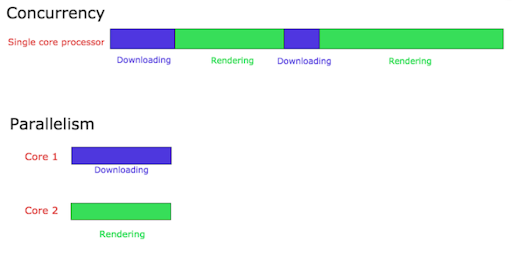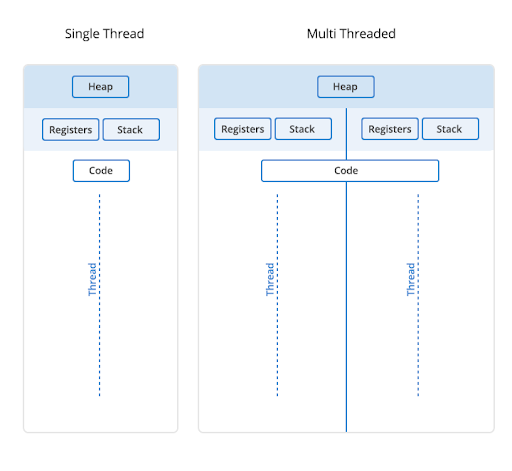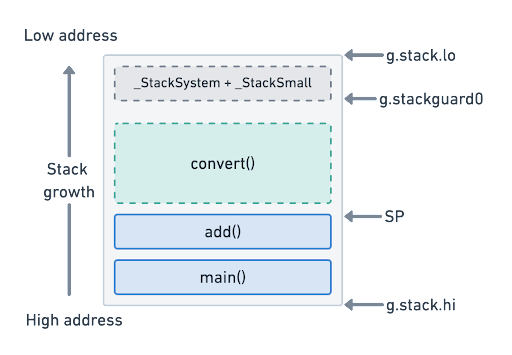Top 7 Reasons Using Golang for Mobile App Development

Golang has been predominantly used as a language for backend development, systems programming and for designing web applications. However, as the language’s popularity increased over the past few years, developers started using it for mobile app development. But, have you ever given this a thought, “Golang for app development?” Why?
Come, let us find out the reasons.
Open-Source and Cross-Platform Language
- Golang is a procedural, open-source language. Thus, it is under constant development and the scope to make it better and efficient is enormous.
- It is cross-platform as well, which means you can use it with Linux, Unix, Windows, macOS, and various Operating Systems that are available for the mobile as well.
- If you write code in Windows, you can use it in Linux. GOARCH and GOOS are the two variables that carry out the majority of the work and they are passed when executing the go build command.
- Furthermore, it has garbage collection, memory safety, structural typing, AOT compilation, and many other important features.
- Most importantly, it consists of a compiler for each of the platforms it supports. Thus, it emits binaries for that platform.
- It has been dubbed as the C for the 21st century, as it is syntactically the same as the C language. Golang has been gaining prominence among developers due to the ease of learning and for being extremely practical.
- Today, Go development is being used by tech giants like Facebook, Google, Twitter, Apple, YouTube, etc. in some of their applications. So, Golang for mobile app development is a great idea.
Impressive Performance
- Golang is a statically typed, compiled language. The semantics and syntaxes are designed in such a fashion that it requires less startup time and ensures fast compilation.
- SInce Golang is compiled to machine code, it reigns supreme in comparison to other interpreted programming languages or the ones that have virtual machines. Furthermore, the binaries that are produced after compilation are small in size too.
- The parallelism of Golang is at par with languages like C++, Java, and C. This phenomenon helps in saving time as developers can execute different models at the same time.
- Concurrency in Golang is quite easy. Thanks to the goroutines that are essentially lightweight, cheap threads. Moreover, the channels ensure proper synchronization and communication between different goroutines. The CSP-style describes how multiple concurrent models should be interacting with one another.


Top-notch Security
- Golang for app development has been significantly considered due to its security feature. Being strongly and statically typed means you have to describe the type of data properly that you pass. This also ensures that the compiler is aware of the type of the variable.
- Another important feature is the checksum database which makes sure that a Go module and collection of various files have remained the same. This attribute leads to trust building and gives developers enhanced assurance.
- The garbage collection aspect also makes the whole framework secure. Golang cleans up and makes way for the integration of the entire collection into a binary that is executable.
- The fact that the language is used for cloud environments and huge-scale servers, made it necessary for the developers to think about security. Thus, steps are taken to upgrade the security features in each version.
Particularly Designed for the Cloud
- Golang was developed by Google to address the concurrency requirements for microservices, scaled applications, and cloud development. It has the ability to run low-level system calls, and makes Docker programming easier and faster.
- Apps are designed to be cloud-native today. Since, Golang helps enterprises create and scale cloud computing systems, it has become a popular choice for app development.
- Golang takes care of many of the issues that the developers have to deal with. It delivers built-in concurrency and idiomatic APIs to use multiple processors to the fullest advantage.
- Golang helps in striking the perfect balance between productivity and performance. This is due to Golang’s “no-knob” tuning and very low latency. Most importantly, significant Cloud providers like Azure, AWS, etc. have Golang APIs.
Good Library
- The vast library of Golang ensures that developers do not have to rely on third-party widgets to get the job done. When you use Golang, you will find that it has plenty of packages that let you handle I/O, cryptography and web servers.
- Furthermore, there are tested frameworks like Buffalo, Gin Gonic, Gorilla, Martini, etc. that help a developer with a wide array of activities. Certain features involve support for documentation, easy integration with 3rd party plugins, exception handling, routing, handlers, middlewares, superb REST API performance, modularity, scalability, etc.
- Unlike popular belief, Golang has a robust ecosystem. The standard library has packages that help you deal with HTTP servers, SQL databases, JSON/XML parsing, and a wide range of encryption/security functionalities.
Utilization of Allocated Memory
- As mentioned before, Golang is a compiled language and does not require interpretation. This gives the language to free up the power to assist the app in performing better.
- The apps that are powered by Golang have good congruence with old devices. This is because the language itself has very few system requirements; thus, the application will be less demanding. This ensures more users, which subsequently refers to more business and money.
- Golang is able to make the most of processing resources. Apps operate as a single process in the background and consume less RAM as a result. Because Go-powered apps use non-system threads, the likelihood of them crashing from memory issues is reduced. In order to maximize the potential of several cores, Google created the same.
- The automated memory management in Golang helps in avoiding large errors. Just for your information, you should know that Golang allocates memory in global heap (dynamic allocations) and local stack (goroutine). Since Golang prefers allocation on the stack, the process is cheap. It requires two CPU instructions (push and release) to perform allocation and deallocation.

Godoc Documentation Engine
Godoc helps in the extraction and generation of documentation for programs written in Golang. The tool presents the documentation in the form of a web page and it runs as a web server.
The tool does not depend on the application of other languages, like PHPDoc, JavaDoc and JSDoc do. It is able to draw out enough data to create an outline, structure, and format documentation, making it a valuable resource for a Golang developer.
You can acquire links for code examples, version control repository, and cross-referencing easily as the technical documentation in Godoc is structured and formatted.
These are the main reasons as to why Golang can be used for mobile app development. The main purpose behind the creation of Golang was to assist programmers in their pursuit to learn a language easily, use built-in test tools, libraries, and concurrency. Most of the cloud providers offer SDKs that work in conjunction with Golang apps (like package sdk for AWS SDK). So, you can imagine how useful Golang is in creating mobile apps.